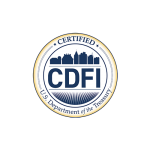Whether you’re 25 or 55, saving up for retirement is a wise financial strategy. Everyone will face retirement at some point in life––it’s important to have a plan so that you can have a solid foundation to fall back upon when retirement approaches.
We’ve made an outline of some steps you can take to help you prepare for retirement.
1. Grab Your Company’s 401(k) Match
If you’re working and you have access to a 401(k) plan, putting away at least enough money to grab the company’s matching contribution is key. For example, say Tom’s company contributes up to 5% of his salary and matches every dollar he puts into his workplace retirement account. If Tom doesn’t add his 5% into the pool, he loses out on free money.
To get the greatest retirement benefit, contribute up to the maximum amount allowed by law to your retirement savings plans. Start early to get the most out of your financial benefits.
2. Contribute to a Solo 401(k)
Even if it’s just a side job, self-employment income allows you to contribute to a solo 401(k) plan where you can contribute up to 25% of your net income––up to $58,000 with a SEP. If you’re under the age of 50, you can invest up to $19,500 in a solo 401(k).
3. Increase Savings with a Backdoor Roth IRA
High-income earners aren’t eligible to contribute directly to a Roth IRA, but there’s another way in. First, contribute to a traditional IRA. There is no income ceiling for contributions to a non-deductible traditional IRA, although there is a maximum limit to what can be contributed. If you take advantage of and utilize a Roth IRA, you can save tens or even hundreds of thousands of dollars on taxes over the years.
4. Consider the State Where You Retire
If you’re of retirement age, we recommend evaluating all of the taxes in your proposed new home state before retiring. Alaska, South Dakota, Wyoming, Florida, Texas, Nevada, and Washington are all states with no state income taxes. Keep in mind that New Hampshire and Tennessee don’t tax earned income, but they do tax dividends and interest.
Fortunately for retirees, most states don’t tax Social Security.
5. Use Age to Your Advantage
If you’re over the age of 50, the tax system works in your favor. Retirement plan contribution limits are raised, giving the older investor the upper hand to accelerate their retirement savings. You’re allowed to increase contributions to both traditional and Roth IRAs to $7,000. Finally, the government rewards retirees the opportunity to contribute an additional $6,500 to the employer-sponsored retirement plan, for a maximum amount of $26,000.
By starting to save for retirement now, you can maximize your retirement account dollars and secure your financial future. Retire with ease! For more tips for money saving, explore our website.







